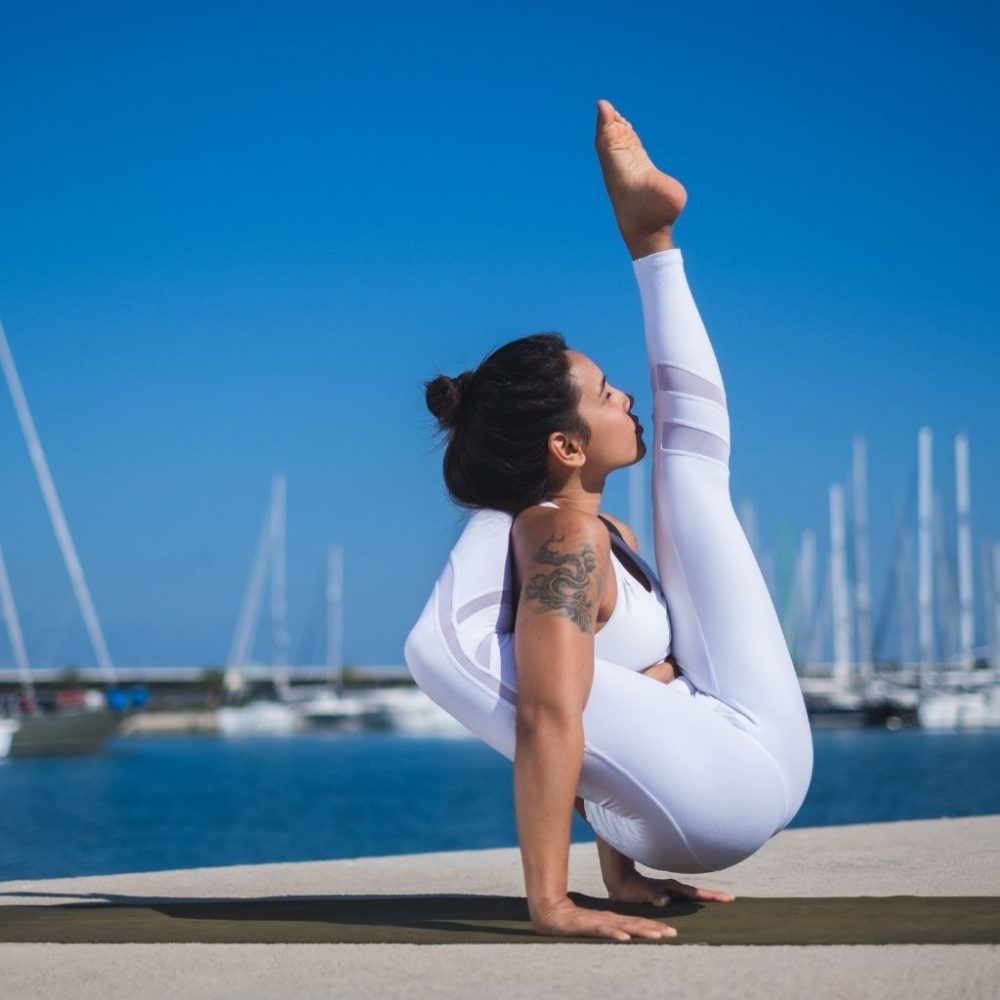What is The Most Intense Form of Yoga?
Yoga is a way of life that focuses on spiritual, mental, and physical discipline to attain perpetual peace.
Firstly, yoga is not only a physical exercise. It is a combination of three aspects: pranayama, meditation, and asana.
Pranayama is a breathing exercise, while meditation is for the mind.

In this article, and when referring to its intensity, we will focus on asana, which is the physical aspect of yoga.
Ashtanga yoga, a form of asana, is the most intense form of yoga because of its fast-paced sequence of postures. It comprises six series of poses: primary, intermediate, and four advanced series. It has 27 poses in its first primary series, including Vinyasa.
This article will help you understand why Ashtanga yoga is considered the most intense form of yoga, how to overcome the initial challenges, and its overall benefits if adequately carried out.
Why is ashtanga yoga challenging?
Ashtanga yoga is very physically challenging because of its fast-paced sequence of linked poses. Despite years of practice, you can be stuck in the same series of postures every day, doing the same thing over and over without much progress.
The level of commitment required to keep up with ashtanga is daunting, which can intimidate many beginners.
You are expected to practice six days a week, and it takes 90 minutes to complete the entire primary series, which is longer than most yoga classes.
Beyond the physical demands, ashtanga requires mental strength and focus to remember the sequences of postures, identifying efficient ways to move and breath through the series, and the zeal to continue to practice when it becomes difficult to progress.
How does it differ from other yoga styles?
Compared to other yoga styles, ashtanga is not influenced by the preferences of teachers. Instead, the series of the sequence must be followed because they are designed to unfold your body as you progress.
In addition, with each passing day, you can monitor improvements and measure progress.
Another aspect of ashtanga that makes it different from others is the Vinyasa. Vinyasa is the linking together of poses seamlessly, through breath.
It helps in building strength and flexibility and provides more cardio challenges than any other yoga style.
Can you practice ashtanga yoga as a beginner?
Beginners who want to practice ashtanga yoga must do so under the guidance of a teacher. It is dangerous for a beginner to practice alone because of the demand of the poses.
A teacher will help you practice at a suitable pace and transition into new postures when it is most appropriate.
Ashtanga is perfect for beginners because of the progressive nature of the sequence. It mentally prepares you and your body for the next set of poses.
While anyone can practice ashtanga, you have to be patient, consistent, and daring for a long time to make considerable progress.
The essential part of ashtanga that makes it most appropriate for beginners is moving at your own pace without losing track.

How often should you practice per week?
The traditional method recommends that you practice six days a week. But the truth is, everyone has different bodies. So, while some people can practice six days a week without burning out, many others find it challenging to achieve.
Research has shown that your body needs about 24 hours to recover after intense practice.
Depending on your body’s needs, we recommend that you explore the days that work for you while maintaining the level of consistency necessary to get results.
Can it be combined with other forms of exercise?
Ashtanga yoga may be combined with other forms of exercise such as running, for instance. However, it may be difficult to mix because of its intensity.
Research has shown that ashtanga offers great aerobic benefits and can have a similar impact as regular exercises.

What are other challenges you may face as a yoga practitioner?
Many people choose yoga because they want to overcome some challenges in their daily life. The irony: yoga itself is challenging.
The first challenge you may face is accepting that you won’t get it right immediately, and it is okay if you feel uncomfortable. However, it will be easier once you begin to embrace the discomfort and condition your mind that it is a rigorous process that requires dedication.
Apart from ashtanga yoga, there are other forms of yoga, such as pranayama and meditation.
Pranayama is derived from the Sanskrit words “prana,” which means life energy, and “Yama,” which means control.
It is an ancient practice that allows you to control every breath and hold’s timing, duration, and frequency.
The aim of pranayama is to connect your body and mind through breathing exercises such as kapalabhati (Breath of Fire) and Ujjayi (Victory Breath). However, these exercises can spark painful emotions.
At first, it is difficult to feel the effects of the pranayama.
However, if certain pranayama practices are unchecked, they can lead to emotions like anger, irritation, and severe heat in the body.
On the other hand, meditation deals with the mind, reducing anxiety, depression, and pain. Yet, you can encounter problems such as cramps and soreness.
The mind is always wandering and hovering around different thoughts. This could lead to being distracted during meditation. While mental relaxation is one of the goals of meditation, people can experience drowsiness.
Wanna know more? 👉 Here How Does Ashtanga Yoga Cultivate Mindfulness?
Conclusion
Yoga is for everyone. Whether you are young or old, a yogi or not, you can reap the benefits of yoga.
Ashtanga yoga is challenging. Nonetheless, it is immensely beneficial. It improves mental wellbeing, and it helps the body to build strength and flexibility.
Whenever you decide to practice ashtanga yoga, these insights will guide your decision.

